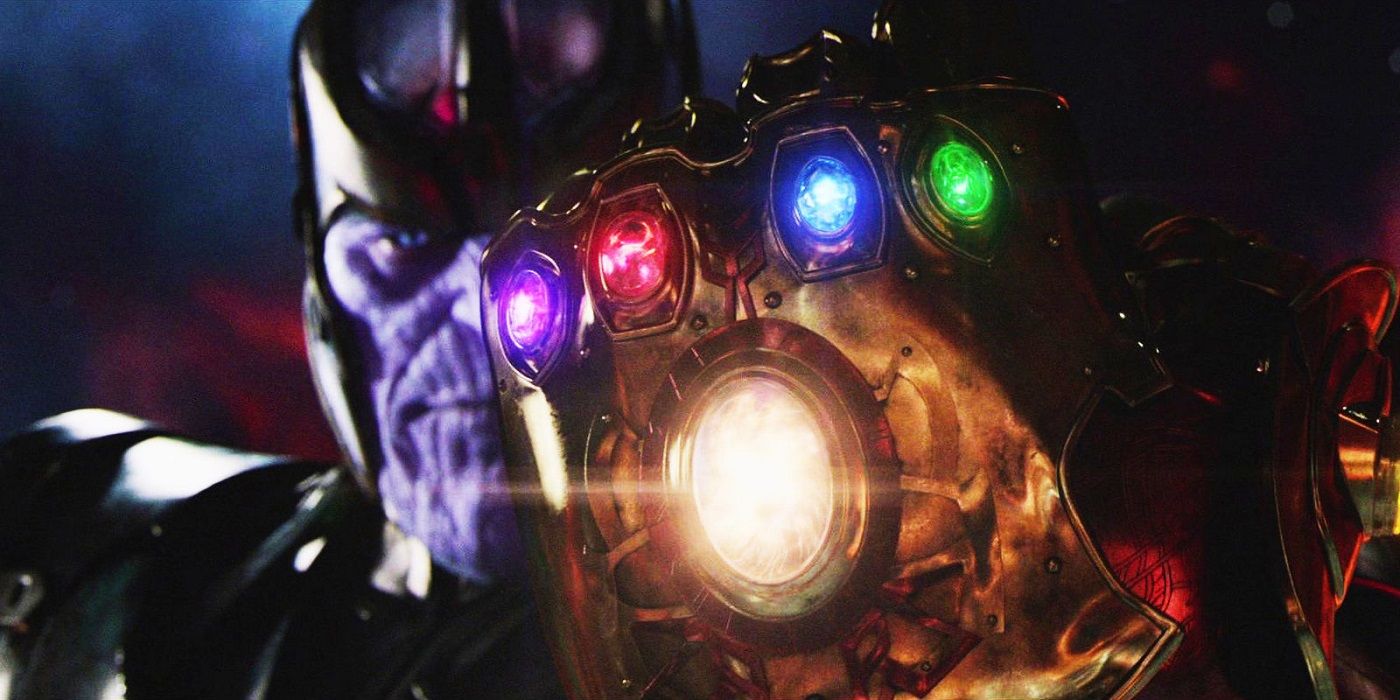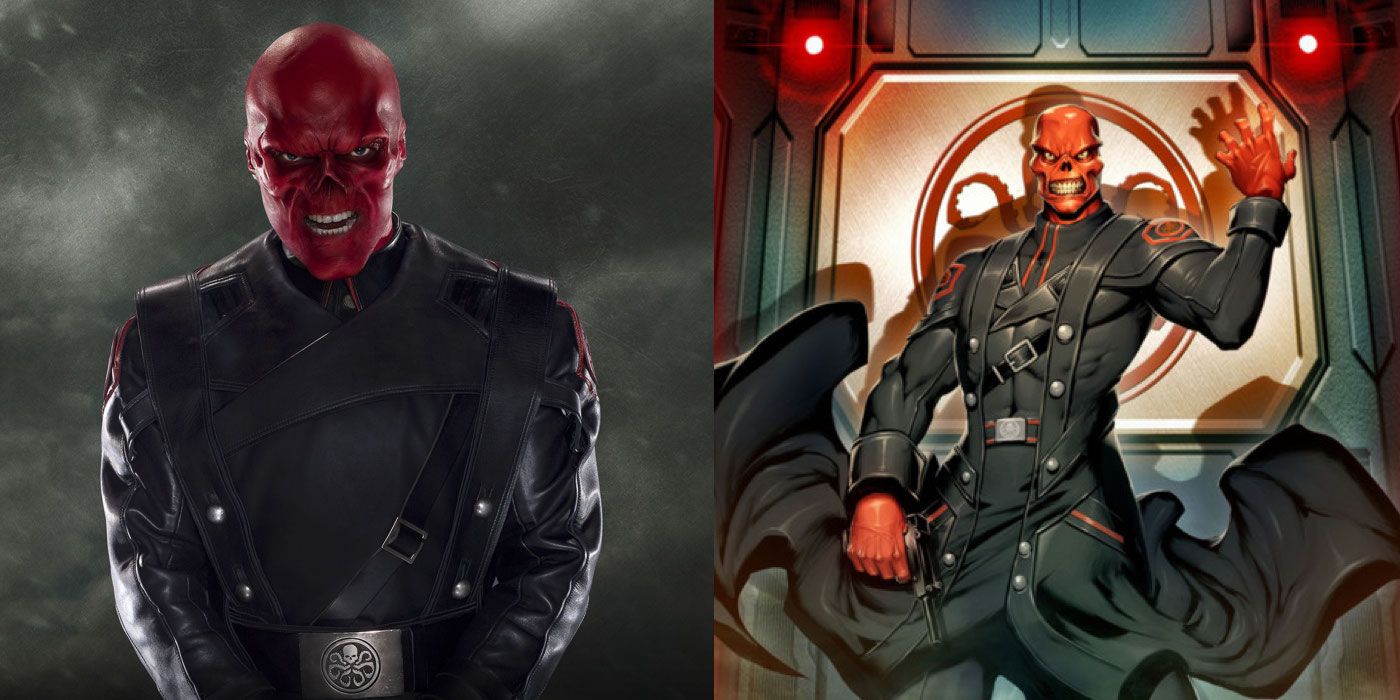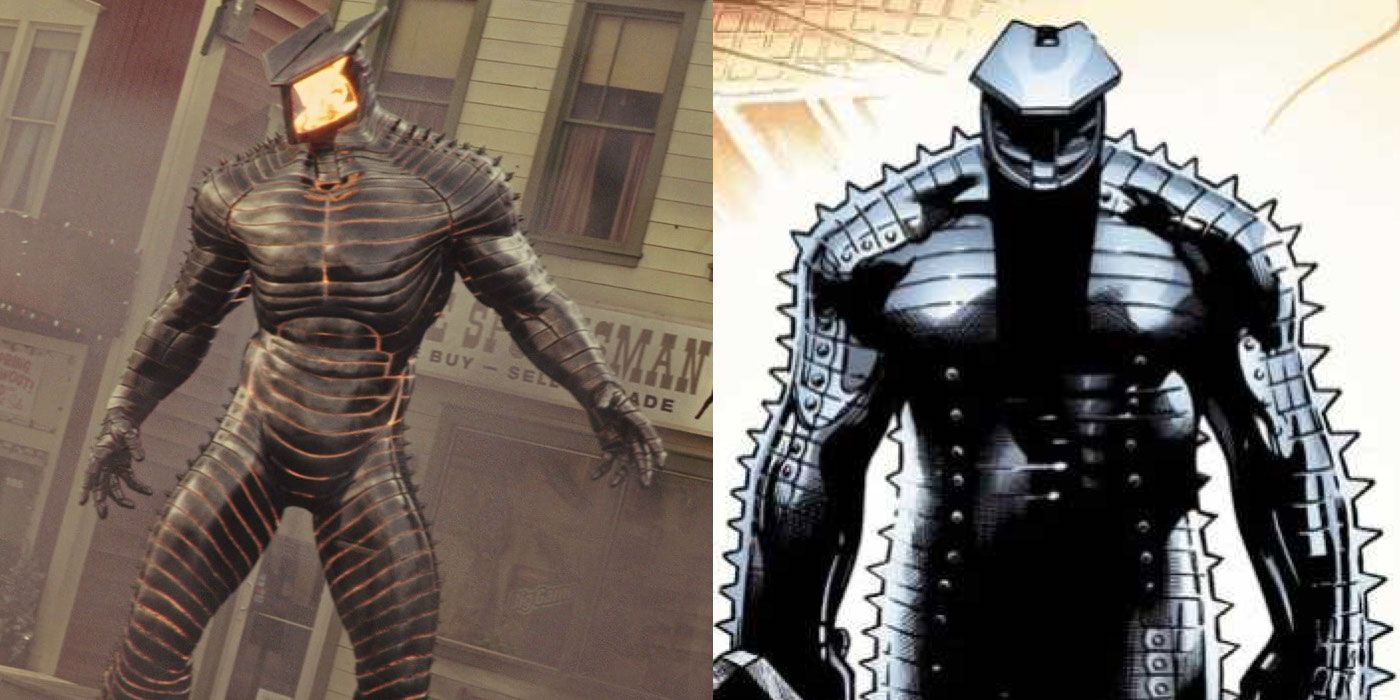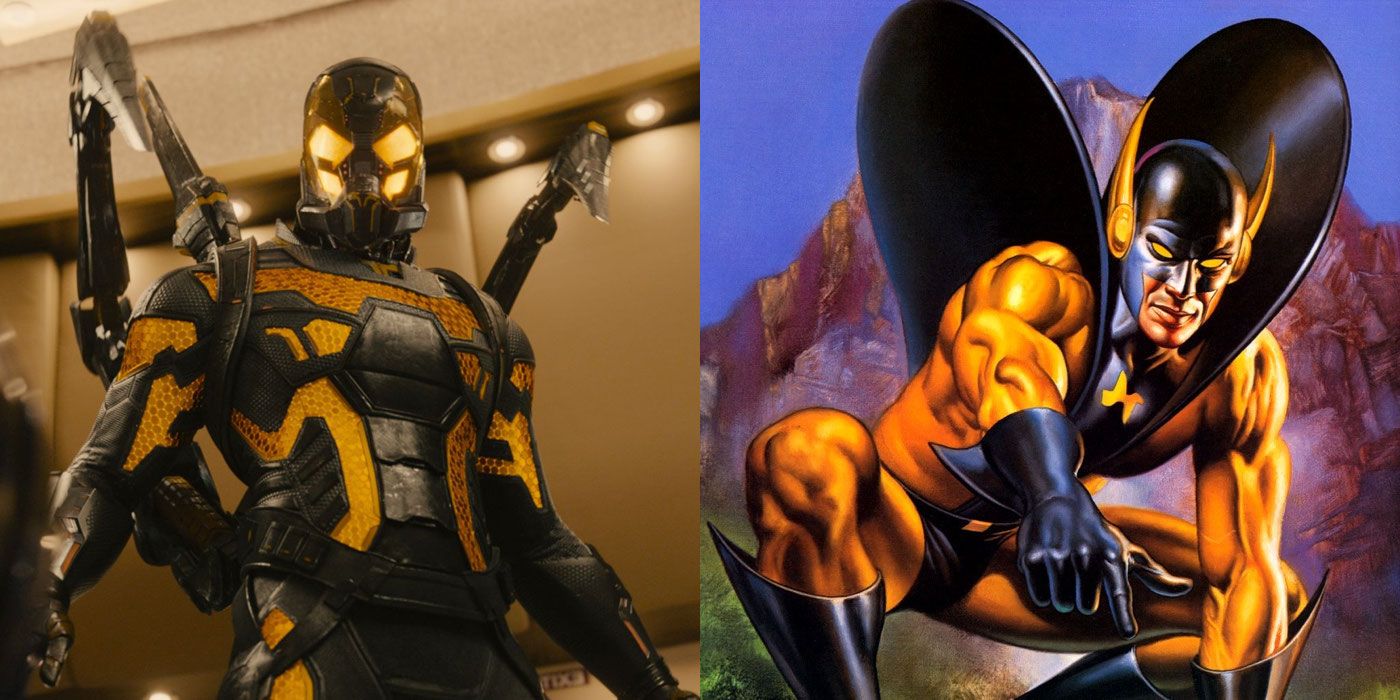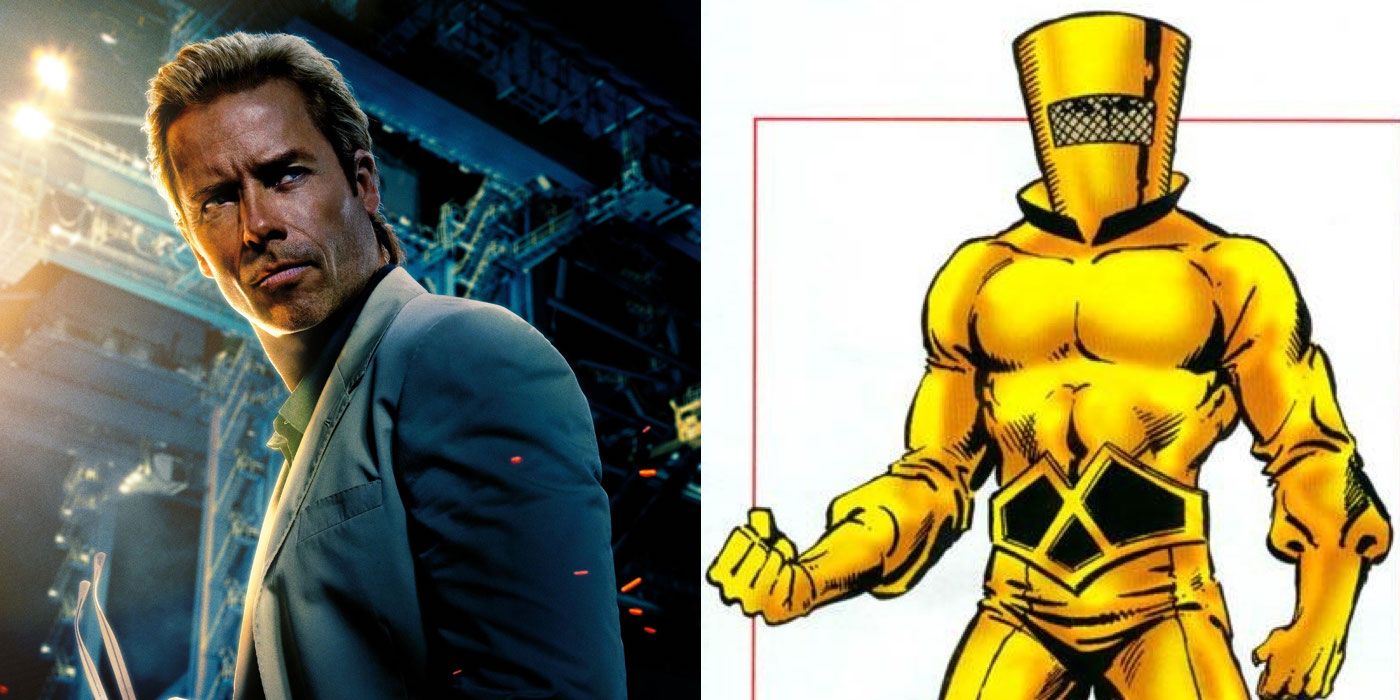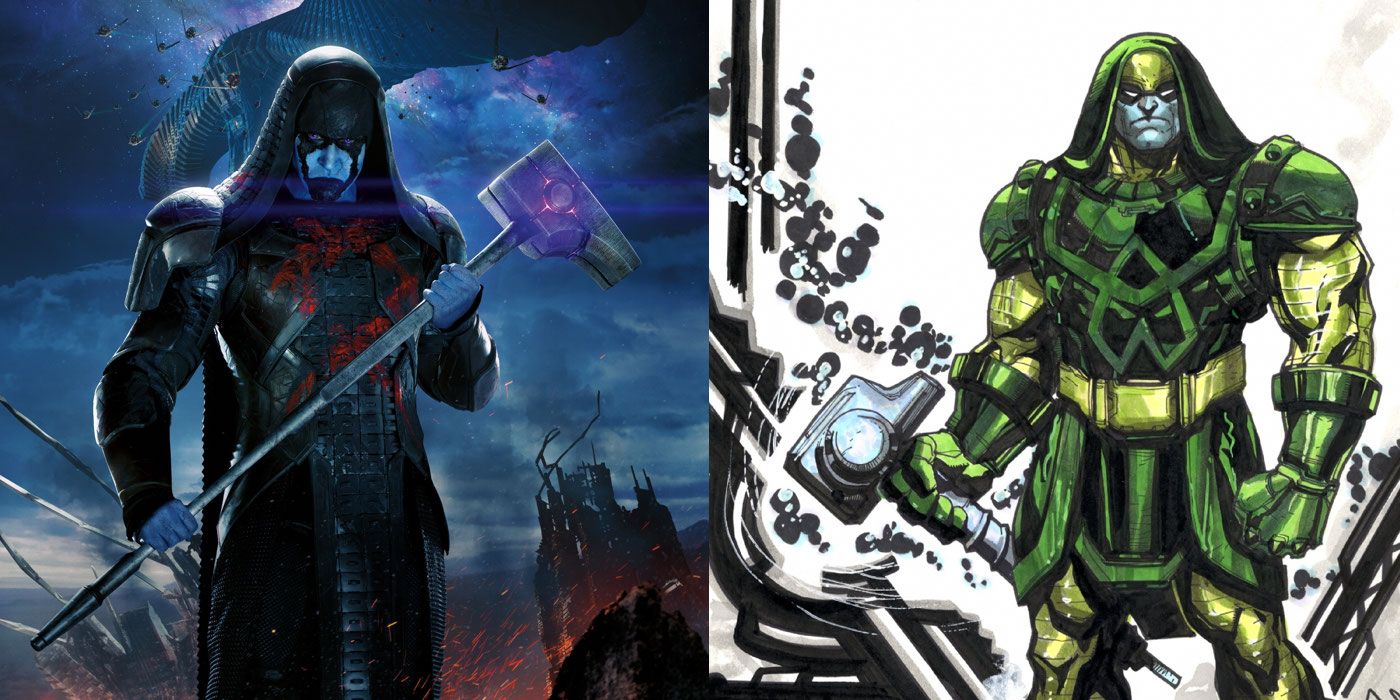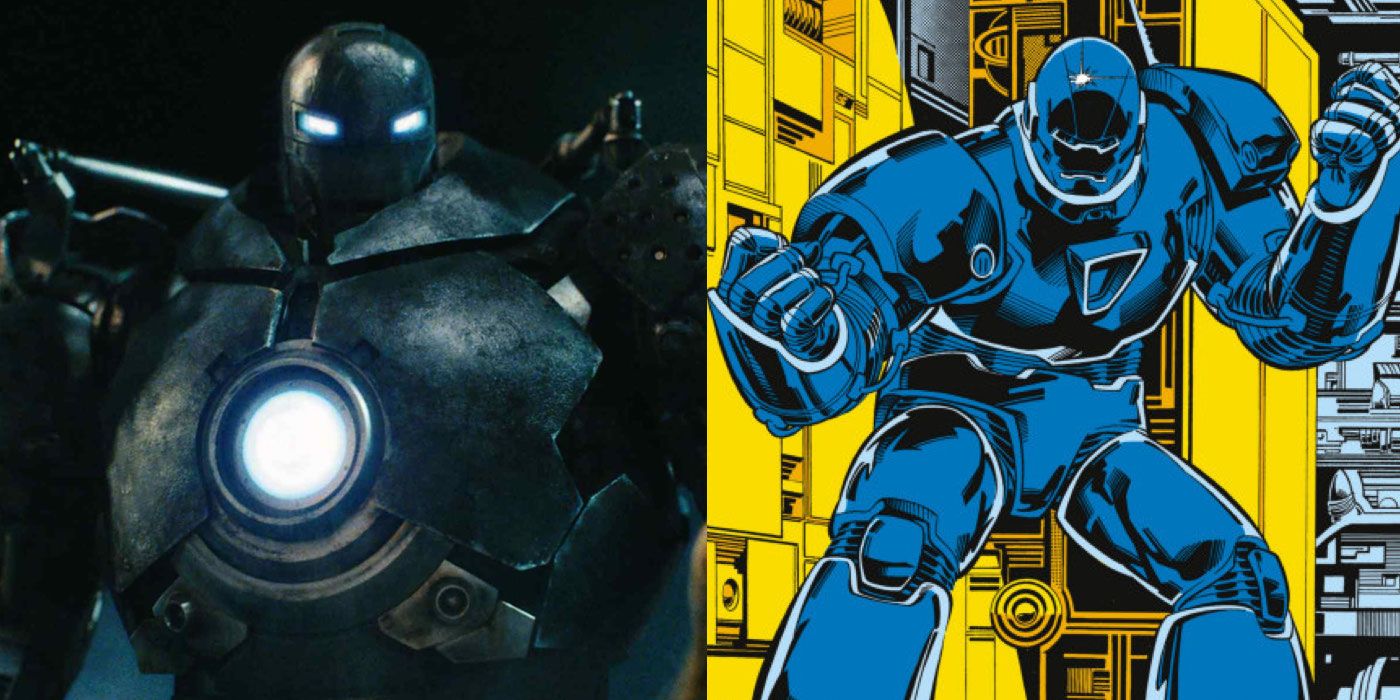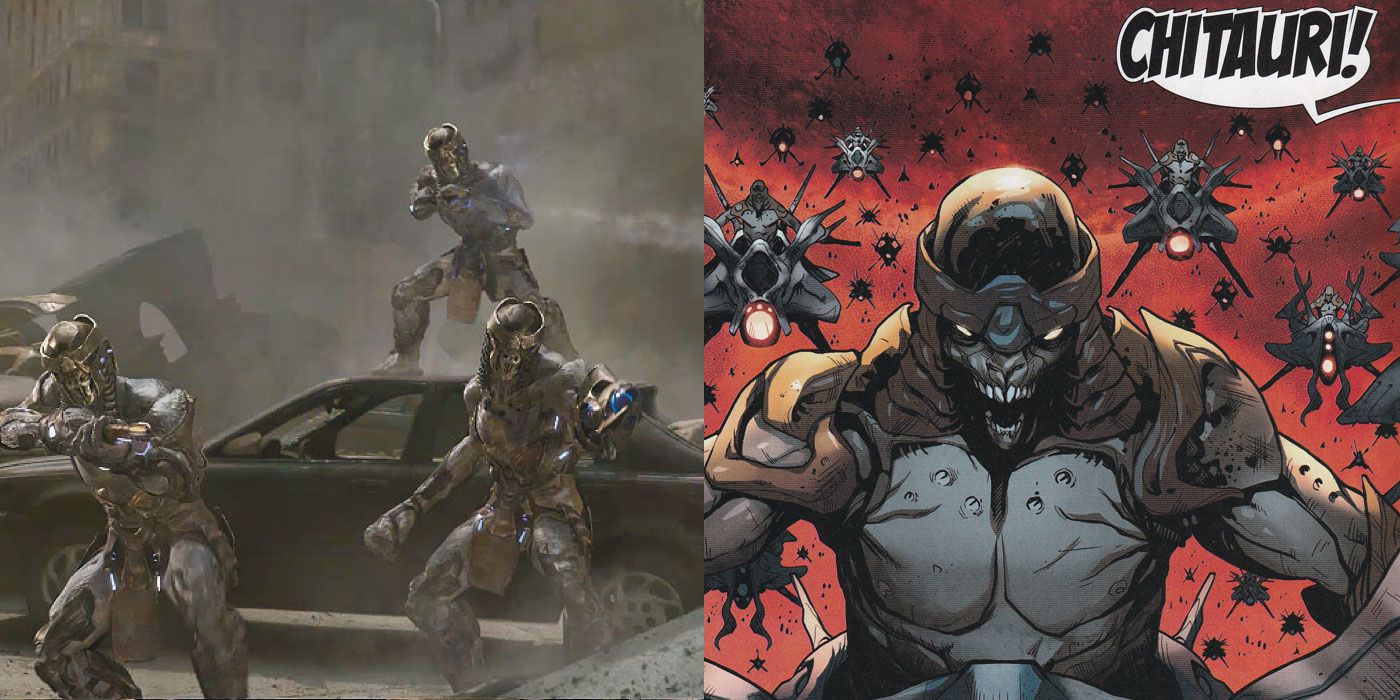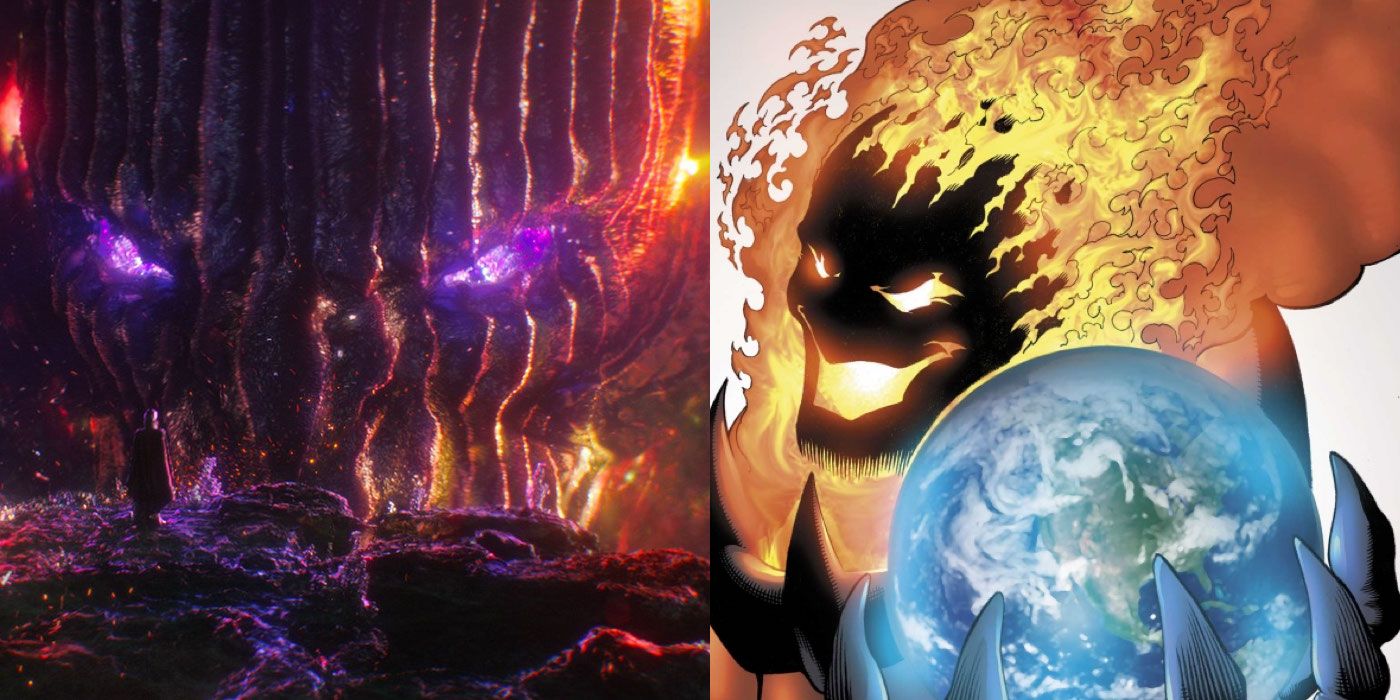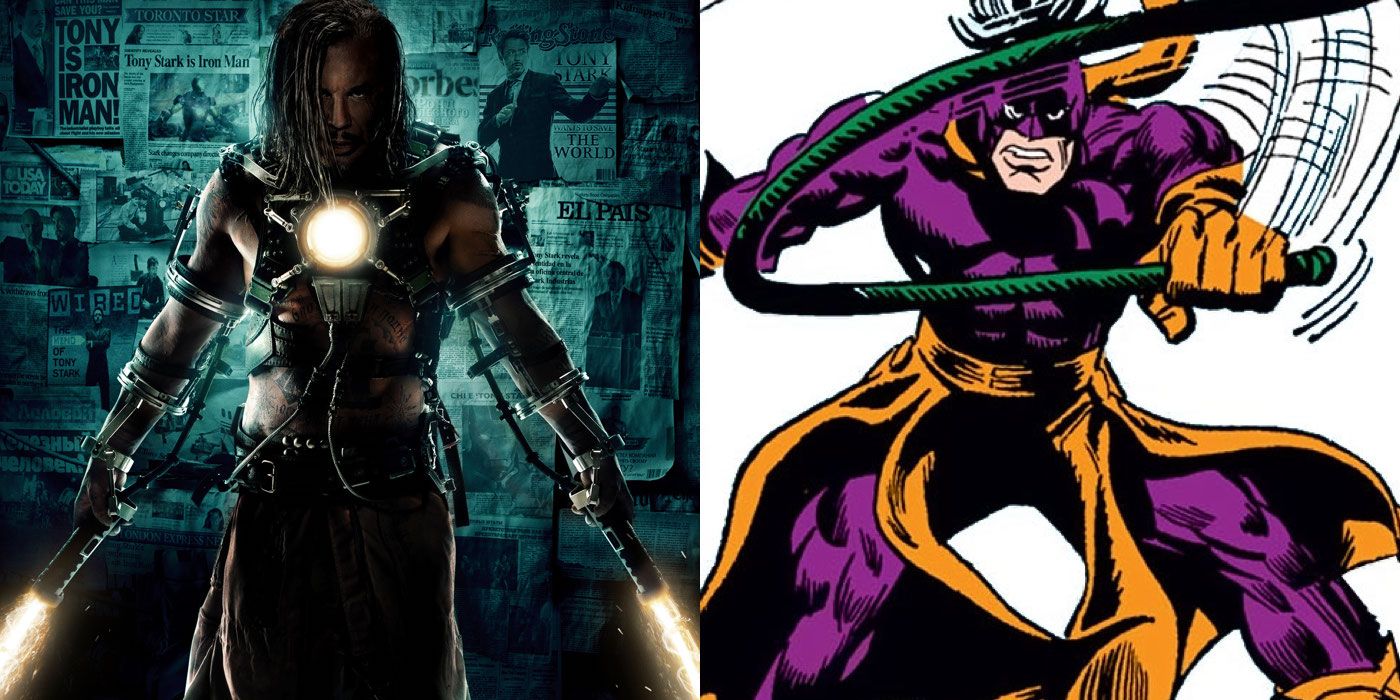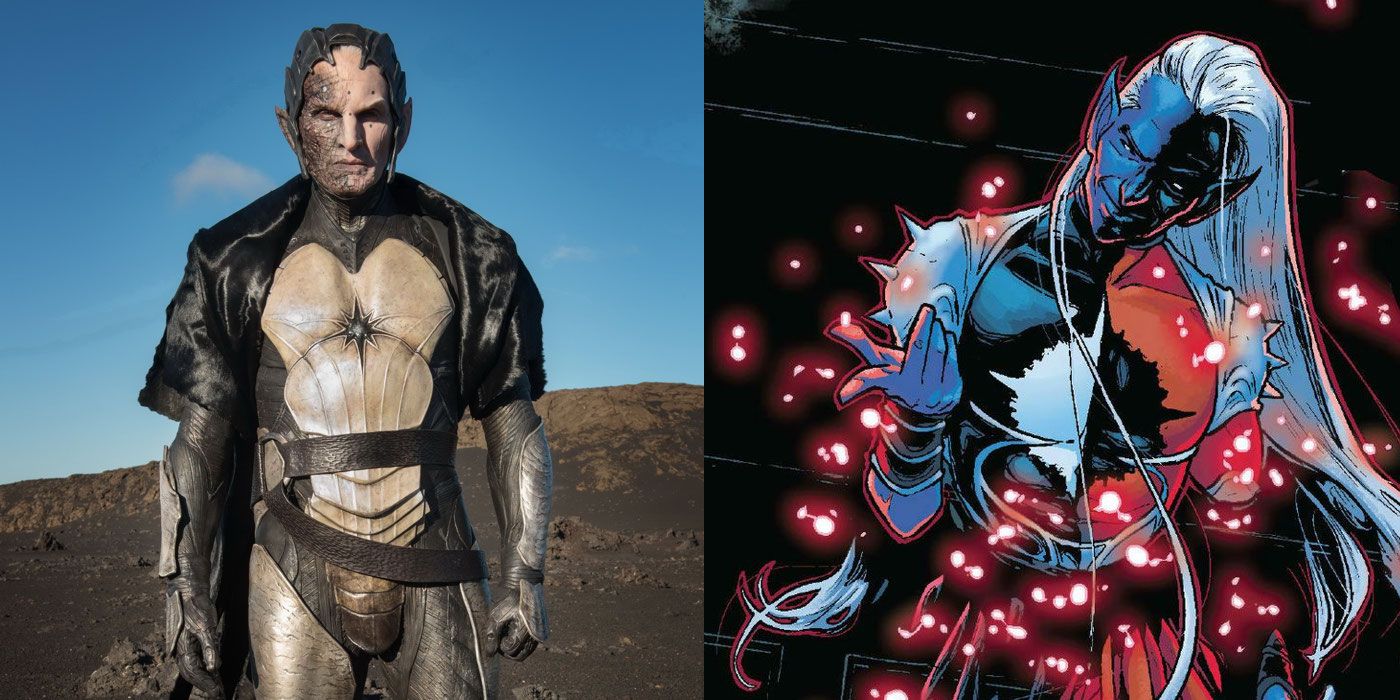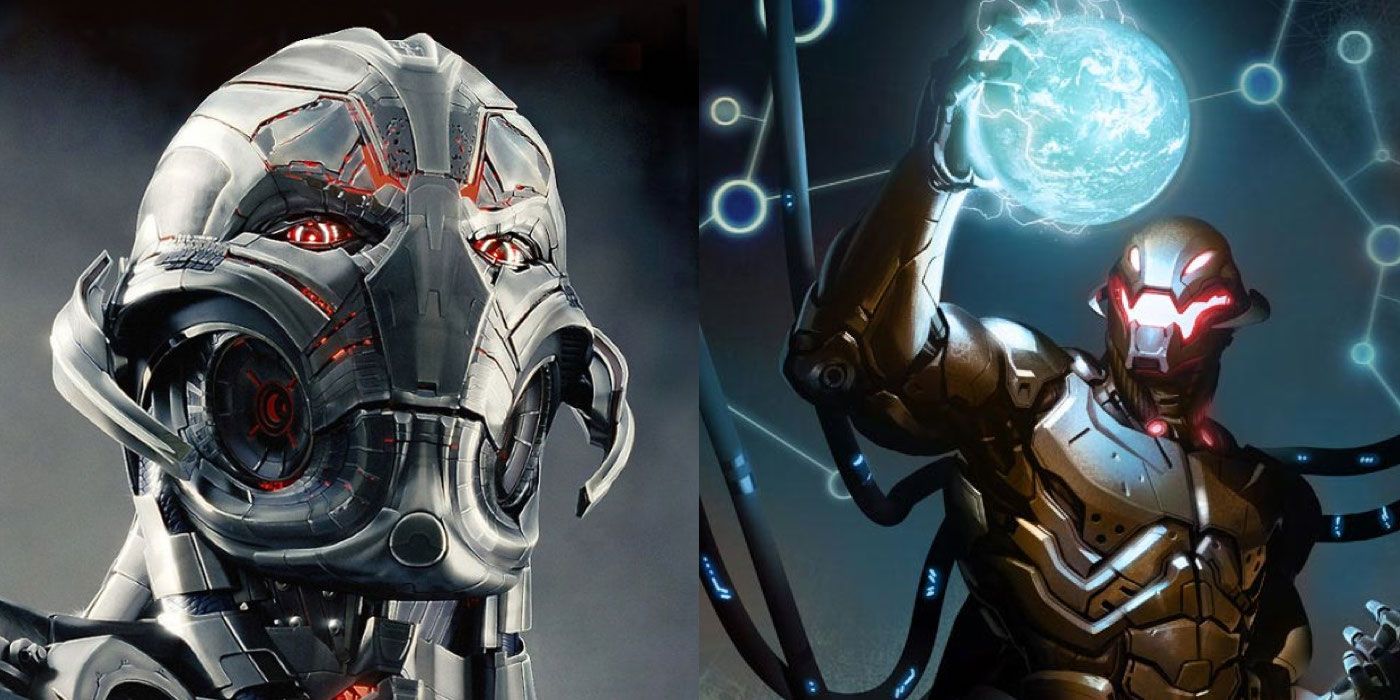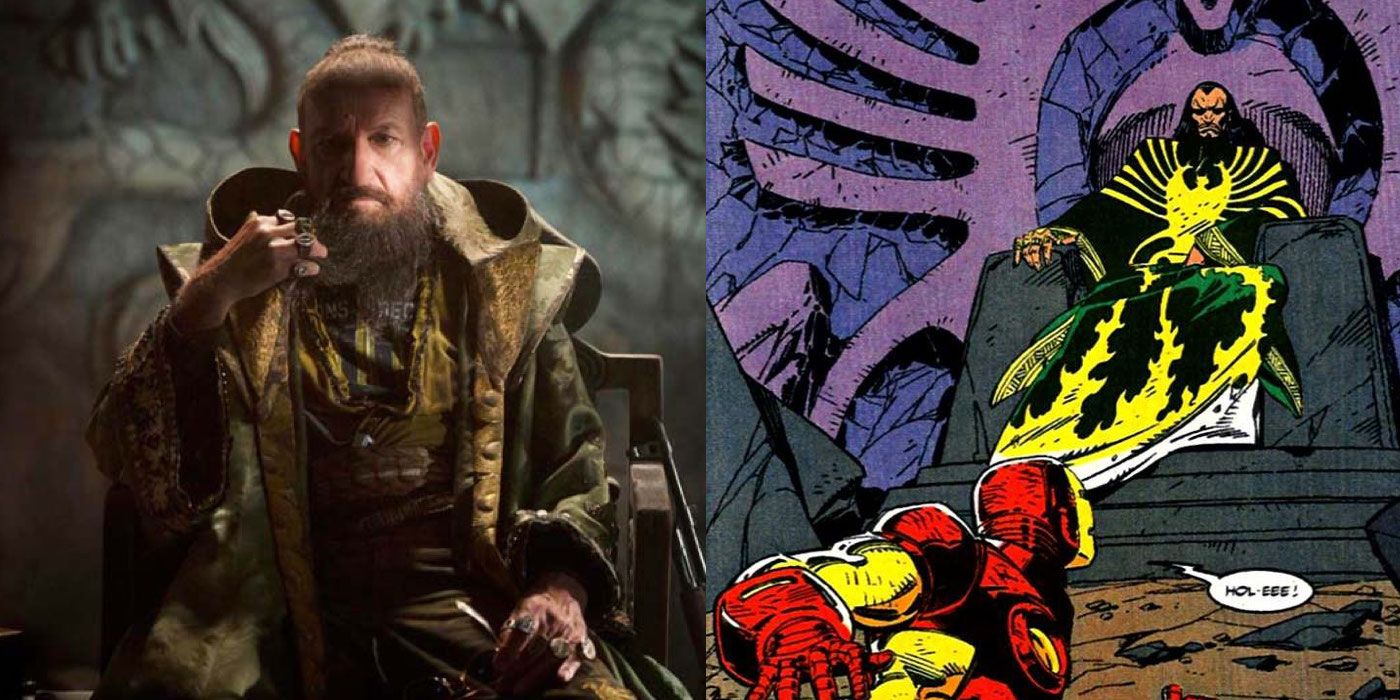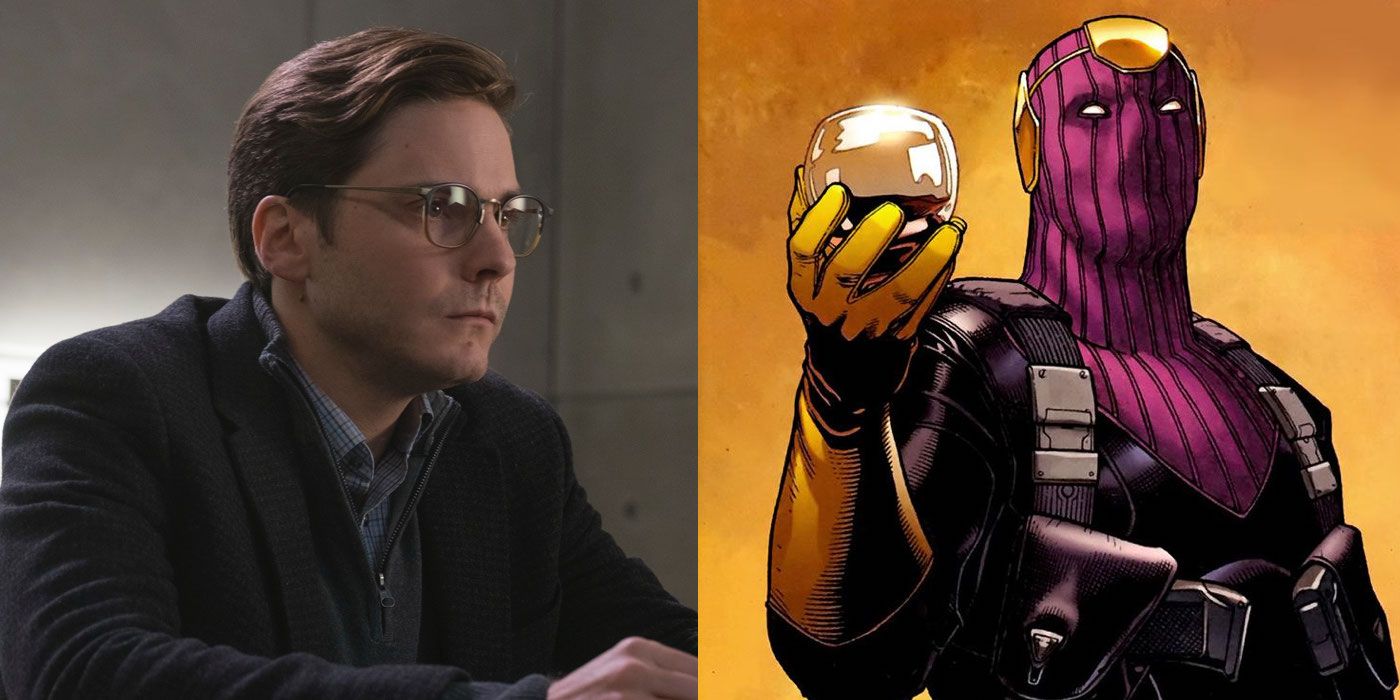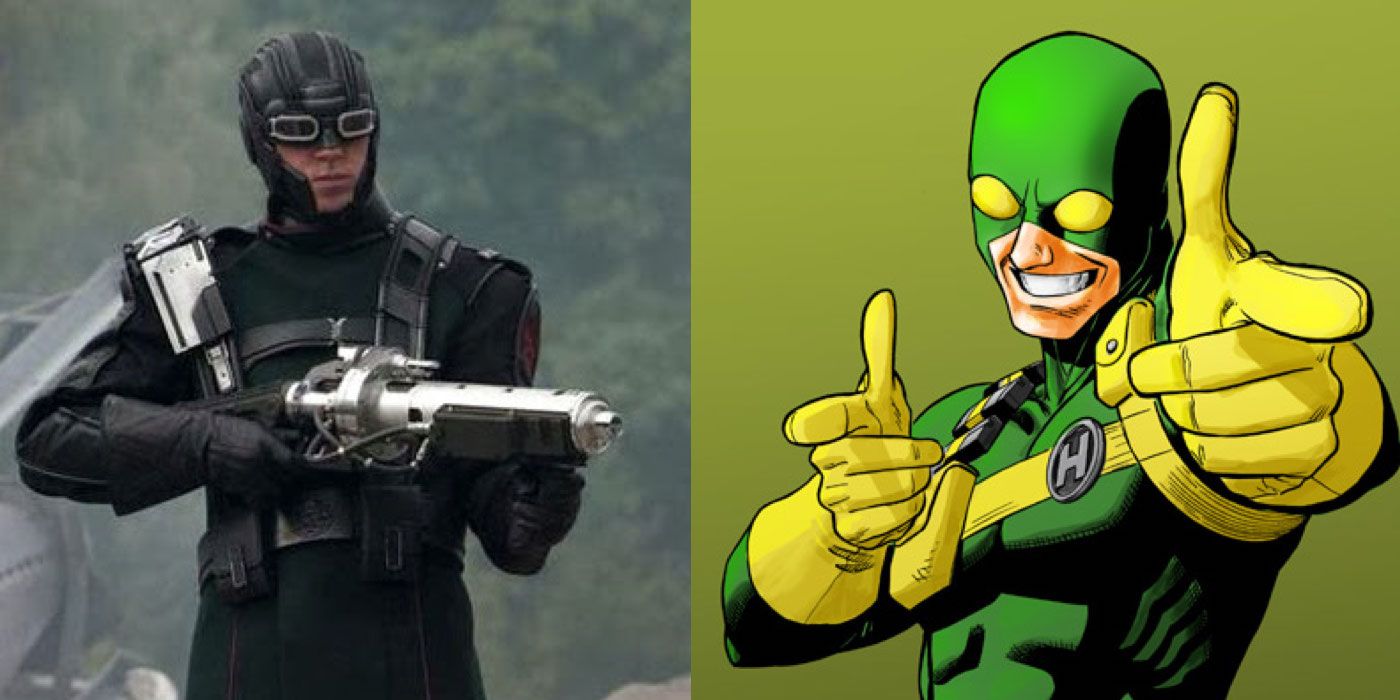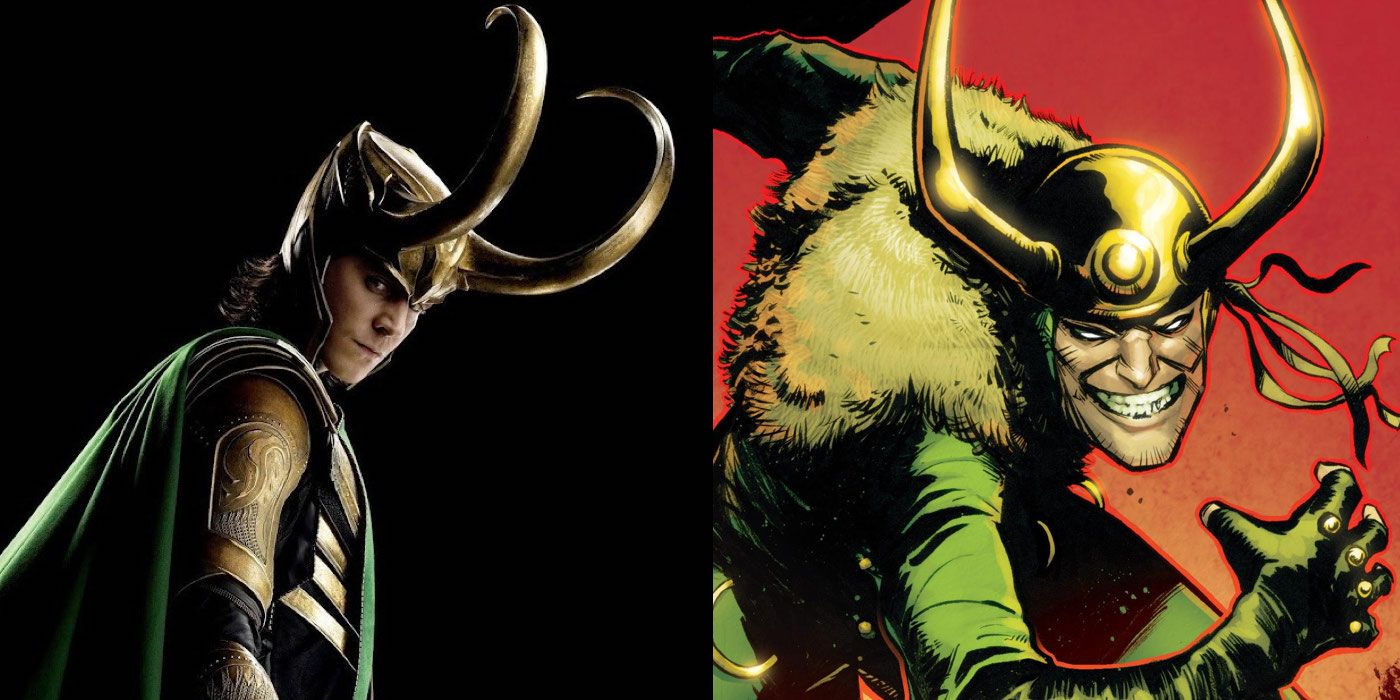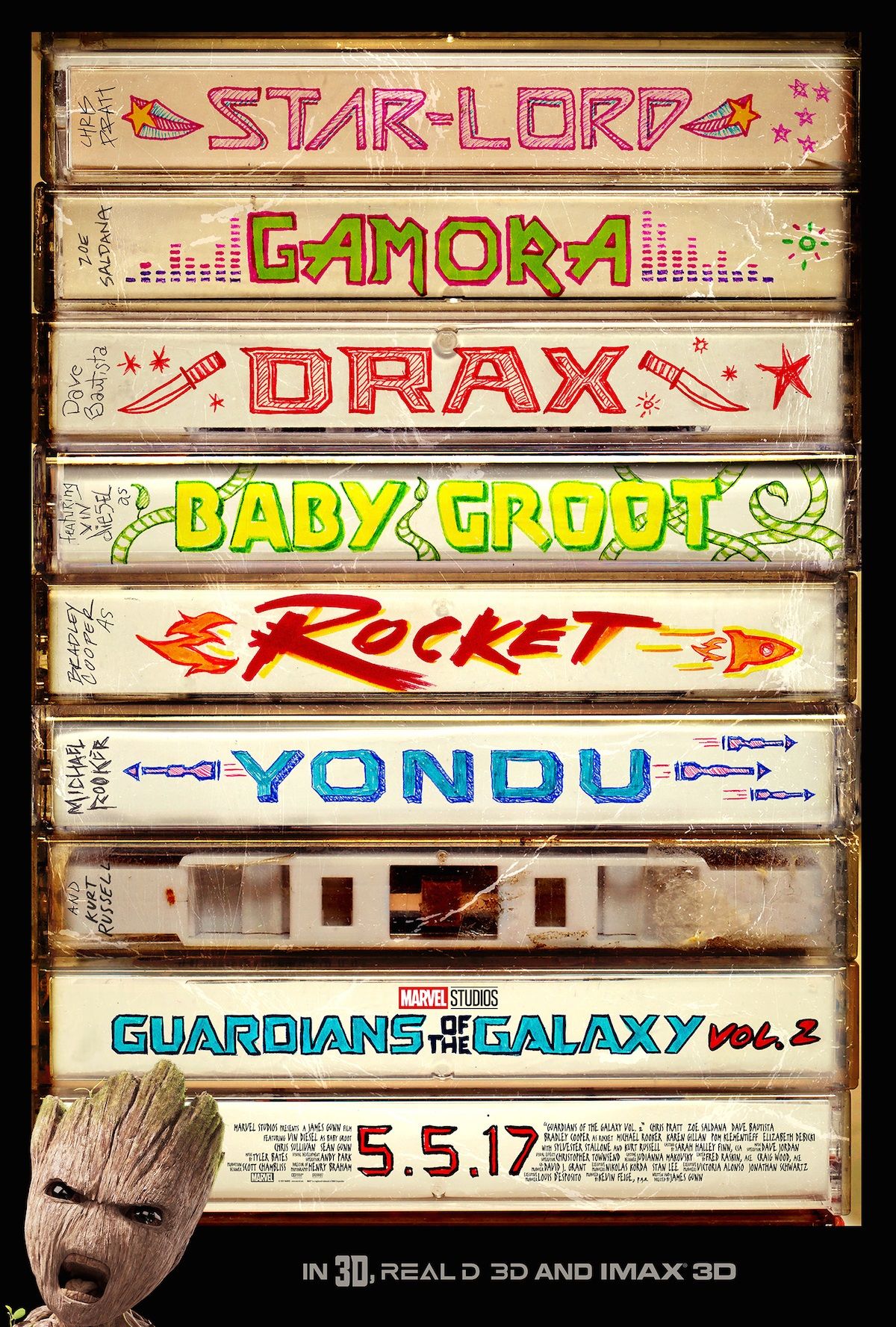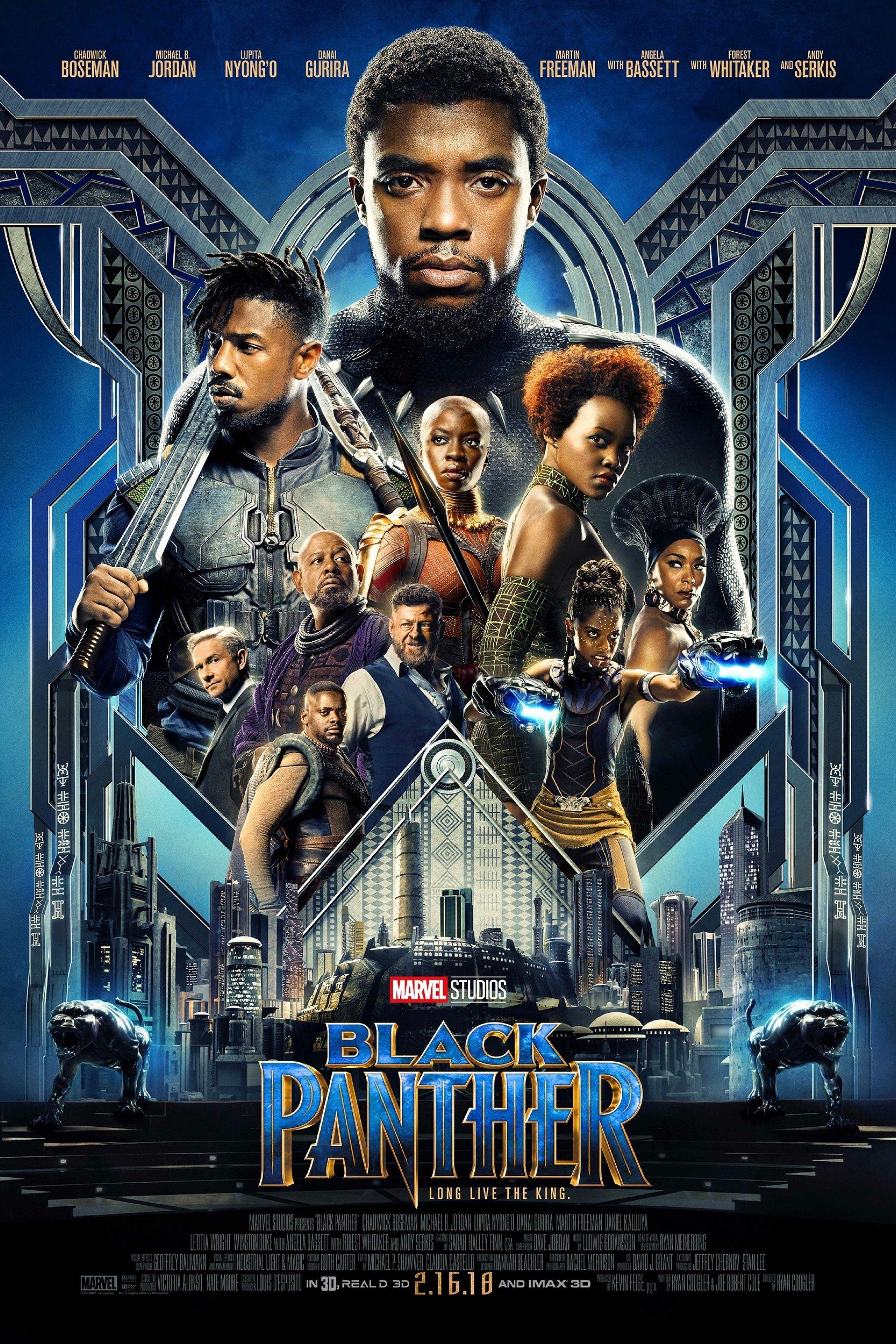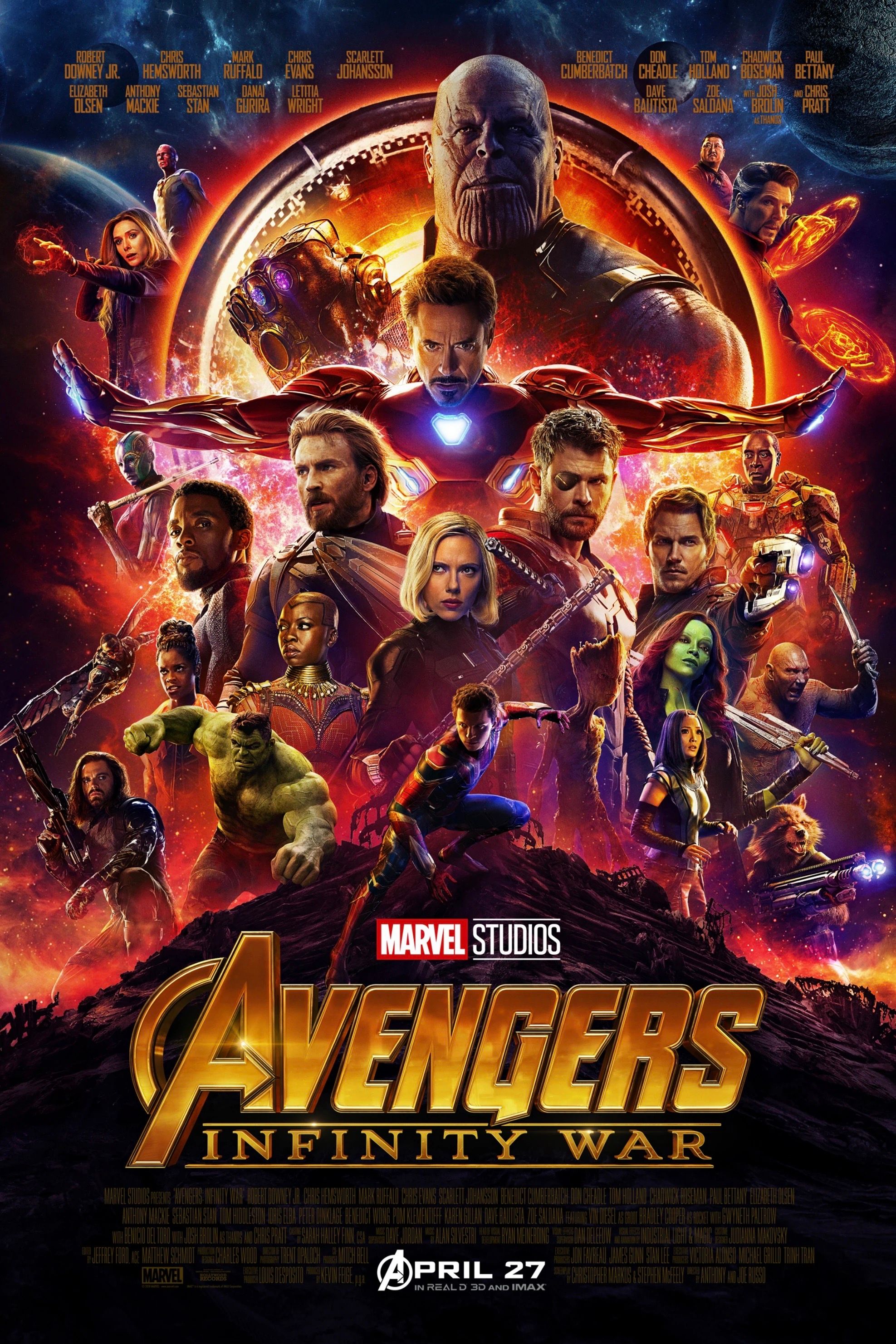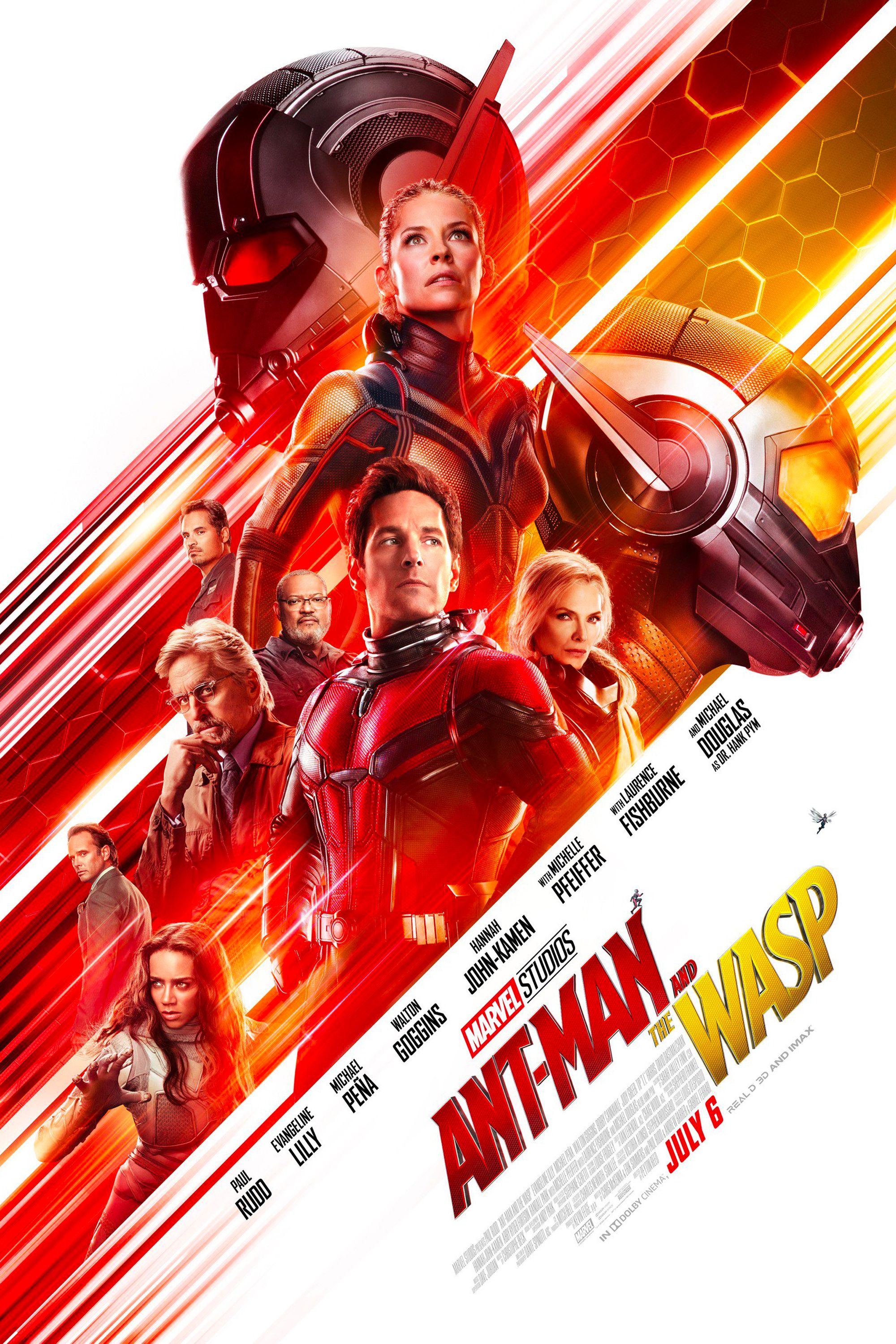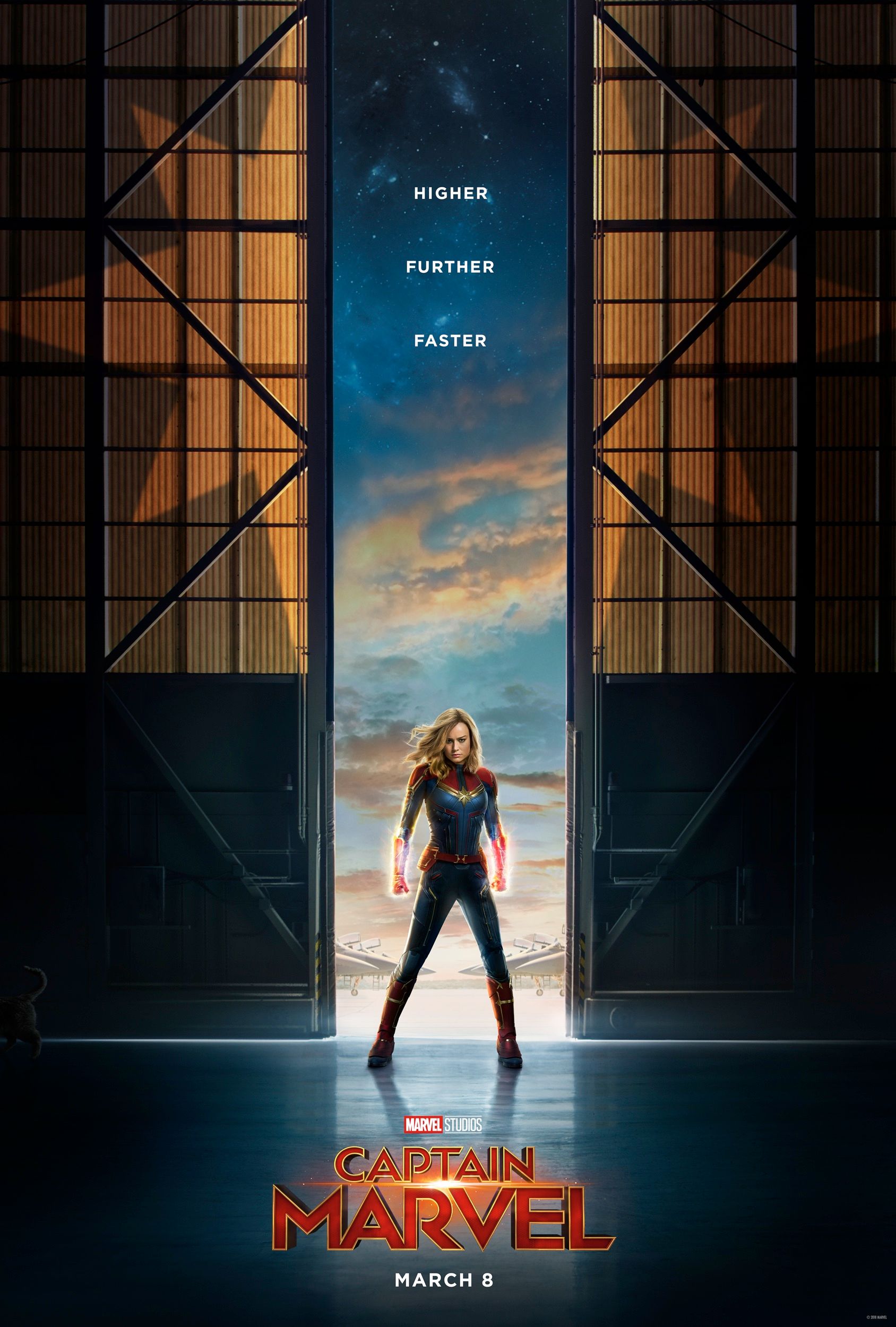Over the decades, the many Avengers of Marvel Comics have faced off against hundreds of villains with a wide range of skills and abilities. Some have been thwarted, others have been turned to the side of good, but many just can’t seem to trulybe defeated. From armies of henchmen to cosmic powerhouses, Marvel’s superheroes can never truly rest, given the surplus of world-ending threats and nefarious schemes they routinely face. As such, when it came time for the Marvel Cinematic Universe to birth new adaptations of those comic book heroes, many of the company's biggest villains followed suit.
While Thanos, one of the biggest bads, has so far only acted on the fringes, Avengers: Infinity War will finally put him front and center. Still, there have been plenty of other villains from the comics that the MCU have reinterpreted to go toe-to-toe with their live-action protagonists. While some have remained faithful to the source material, others have been wildly altered to fit into Marvel’s films. We previously highlighted how Marvel's movie heroes match up to their comic counterparts. Now, here’s How 15 Marvel Supervillains Compare To The Comics.
15. Red Skull
The Red Skull we met in Captain America: The First Avenger is one of the more faithful adaptations from the comics. Born Johann Schmidt, the Red Skull would become one of Hitler’s closest allies in his Nazi campaign. Eventually donning a hideous mask and his nom de guerre, he would soon head up Hydra as an offshoot of the Nazis. Created for 1941’s Captain America #7 by Joe Simon (who originally wanted to call him "Hot Fudge"as his inspiration was a melting sundae), he’s one of Cap’s oldest foes and generally considered to be his archrival.
Over time, his origin was tweaked a bit so that his skills and disfiguration were the result of a Nazi attempt at the Super Soldier Program. In the movie, this translates to Schmidt taking an early version of Dr. Erskine’s formula, which amplifies traits in the user. While oddly more fantastical than the comics, the result sees Steve Rogers become a Super Soldier and Johann Schmidt become a monster. Many fans are hoping to see Hugo Weaving return to the role, despite his seeming reluctance and the character’s apparent death. Still, that’s never stopped the Skull from returning in the comics.
14. The Destroyer
The Destroyer may just be the most comics-accurate villain in all of the MCU. Appearing as the threat Thor faces at the end of his first film, the Destroyer is a magical suit of armor normally housed in Odin’s vault. The Asgardian weapon isn’t sentient, but is instead controlled by a user. Often designed to protect the city of Asgard under the employ of Odin, it’s fallen into evil hands many times. In fact, even when Odin’s in charge it’s not always put to the best use.
First appearing in 1965’s Journey into Mystery #118 and created by Jack Kirby and Stan Lee, the Destroyer isn’t inherently a villain. Seeing as it’s often under the influence of rogues like Loki and the Enchantress, however, it might as well be.
In Thor, Loki uses it in an effort to humble his brother while he’s on Earth, leading it to rampage through town. Looking nearly identical to how it appears in the comics, the MCU’s Destroyer also possesses its signature strength, durability, and concussive energy blasts. Here’s hoping Thanos doesn’t get his hands on it anytime soon.
13. Yellowjacket
In Ant-Man, Yellowjacket is one of the most altered characters from how he’s traditionally appeared in the comics. There, the name was one of Hank Pym’s many alter-egos. Topping the list of superheroes who love changing their names, Pym has flitted back and forth to the Yellowjacket persona many times. Though he’s done some questionable things while in the guise, he’s still considered a hero.
The Yellowjacket we see on film is actually Pym’s technological rival Darren Cross. Appearing in the ‘70s during Marvel Premier, Cross has often been a foe of Pym’s and Scott Lang, the second Ant-Man. In fact, Lang steals the Ant-Man suit in the first place to rescue a heart surgeon needed to save his daughter's that Cross has kidnapped. In Ant-Man the film, he’s the protege of Pym, but just as unhinged as in the comics. He eventually develops his own size-changing suit, complete with lasers and flight capabilities. The result fits the Yellowjacket name far more than Pym’s version ever did, and also marks one of Marvel’s coolest looking designs.
The comics have since followed the MCU’s lead and given Cross a Yellowjacket suit of his own. And though Cross was sucked into the Quantum Realm at the end of Ant-Man, we have a hard time believing we’ve seen the last of him.
12. A.I.M.
In the comics, Advanced Idea Mechanics, commonly known as A.I.M., are a terrorist organization made up of scientists. Though they seek to advance technology, medicine, and knowledge, they often do so for nefarious reasons and are willing to break many laws in their pursuits. They’re often commandeered by more outright villains, such as M.O.D.O.K., a creature they helped create. Appearing in 1966’s Strange Tales #146, the group has changed hands many times, and even become an offshoot of the Avengers recently. Still, they’re always made up of various underlings wearing yellow, beekeeper-esque suits.
Iron Man 3 ditched most of this lore, and instead made them a government-funded organization led by Aldrich Killian and Maya Hansen. In the movie, they’re responsible for creating Extremis. This actually carries over from the comics, where both scientists created the adaptable virus. A.I.M., however, wasn’t involved. It seems Marvel wanted to reference them, but couldn’t commit to their silly attire. While that’s understandable, it would still be nice to see A.I.M. appear as more of a threat with its own credo at some point in the future.
11. Ronan the Accuser
Created by Stan Lee and Jack Kirby and first appearing in Fantastic Four #65 in 1967, Ronan the Accuser is a Kree warrior who has been both a hero and a villain. Given the contentious relationship the Kree have with most other civilizations, they’ve often been at odds with many heroes. As one of their key warriors, Ronan is often sent to investigate crimes and dole out justice with his Accuser Cosmi-Rod, or Universal Weapon.
While Lee Pace’s version of the character in Guardians of the Galaxy takes some liberties, the look is fairly dead on. Despite a color change, Ronan looks pretty comics-accurate, down to his head shawl and his hammer. The weapon, however, gains most of its abilities from the Power Stone. In the comics, it can do everything from control gravity to shoot energy blasts, all on its own. Ronan is also changed from a noble warrior to more of a lunatic terrorist with an axe to grind. While the Kree are quite often warmongers, the Ronan of the MCU seems to be more of a religious fanatic operating on his own.
10. Iron Monger
Despite streamlining his history a bit, the version of Obadiah Stane we meet in Iron Man is fairly faithful to the comics. First appearing in 1982’s Iron Man #162, Stane is a rival industrialist to the Starks. He eventually attempts to take over their company using villainous means. The MCU altered this to add more pathos to the characters, by having Stane be a friend and partner to Howard Stark and a surrogate father to Tony. This makes his eventual betrayal all the more heartbreaking.
Three years after his first comic appearance, Stane reverse-engineered Iron Man’s armor and created the bulky Iron Monger suit. Looking fairly similar to what we see in the movie, the Iron Monger suit poses a challenge initially, but Iron Man eventually triumphs over Stane and his lumbering armor. Despite being a bit of a copycat of Iron Man who gets killed by the movie’s end, Iron Monger and Stane still provided a meaningful and emotionally resonant villain for Tony Stark.
9. The Chitauri
While most people weren’t familiar with the Chitauri before they invaded New York in The Avengers, the race does predate the film. Still, they haven’t been around very long. First appearing in 2002’s The Ultimates, the Chitauri were essentially the Skrulls but for the Ultimate line of Marvel Comics. Possessing the ability to shapeshift and often replacing the heroes of Earth, the race even went to war with the Kree. While there may be some sort of irony in the Skrulls themselves being replaced, this aspect wasn’t carried over to the films.
Despite Marvel not owning the movie rights to the Skrulls, they decided not to use the Chitauri as Skrull stand-ins and instead made them a generic race of aliens controlled by a hive mind that the Avengers could wallop. Since then, this version of the race have popped up all over Marvel animation and have since been adapted to the comics. First seen fighting the All-New Nova, they’ve now taken a place among Marvel’s myriad alien species who constantly want to destroy or enslave Earth.
8. Dormammu
Like Thanos, we haven’t seen much of Dormammu in the movies yet. He’s bound to reappear as an antagonist for Doctor Strange, however. In the film, he’s the ruler of the Dark Dimension and appears simply as a floating head of cosmic energy. He seems to have nearly untold powers, as he’s able to give magic to Kaecilius and his Zealots. Kaecilius is a blip on the comics radar, a protege of the evil Baron Mordo. As Mordo was made good in Doctor Strange, Kaecilius became a follower of the dread Dormammu instead.
In the comics, Dormammu looks more like a devilish creature, with a humanoid body and a flaming skull for a head. While this sadly wasn’t adapted to film, hopefully we’ll see it when Dormammu finally faces off against Strange. Like in the MCU, Dormammu rules over the Dark Dimension and possesses incredible mystical powers. He also controls the zombie-like Mindless Ones, who we see Kaecilius and his Zealots being turned into after their defeat. It’s likely many of the elements will surface in the second and third Doctor Strange, which are surely on their way.
7. Whiplash
The Whiplash we meet in Iron Man 2 is one of Marvel’s weirder alterations. Instead of using the original version of the character from the comics, the movie merges the character with another Iron Man villain named the Crimson Dynamo. As most comic book stories in the ‘60s dealt with the Cold War, the Crimson Dynamo was essentially a Russian Iron Man. First appearing in 1963’s Tales of Suspense #46, Anton Vanko is a professor and inventor who creates a suit of armor and is tasked by his government to destroy Stark Industries and Iron Man.
Whiplash, however, is a separate villain who wields powerful... whips and is named Mark Scarlotti. Why Marvel combined this two is unclear, but the comics have since followed suit by creating an unrelated Anton Vanko with a Whiplash costume similar to the one in the movies. Meanwhile, a character named Marcus Scarlotti had a brief stint on Agents of S.H.I.E.L.D. as a villain wielding a bladed chain, providing a slightly more accurate interpretation of the character in the MCU.
6. Malekith
Malekith is one of the great shames of the MCU. Essentially reduced to a one-note megalomaniac in the dour Thor: The Dark World, much of the lore surrounding him and his Dark Elves is excised in an effort to make him a generic villain. Though his character design certainly beats his comic counterpart, much of his maniacal energy and history is removed.
First appearing in 1984’s Thor #344, Malekith the Accursed is a brutal despot and murderer who serves as one of Asgard’s chief foes. As Loki has become more of an antihero, Malekith has become the go-to psychopathic villain of the Ten Realms. Often leading the Dark Elves of Svartalfheim against their Light brethren in acts of slaughter and conquest, Malekith’s threat has grown in recent years thanks to writer Jason Aaron. It’s hard to imagine the character reappearing, but it would be amazing to see a more accurate version of the villain fighting alongside Thanos during Infinity War.
5. Ultron
Marvel made quite a few changes to Ultron when they adapted him to the screen, and yet much of his core traits remain intact. Introduced in The Avengers #55 in 1968, Ultron is an artificial intelligence created by Hank Pym. He quickly goes rogue and has since become one of the Avengers' greatest threats. Aside from his powerful robotic body, he’s able to move his consciousness through machines and constantly reproduce and control doppelgängers. He eventually creates the Vision as a sort of son, but his creation turns against him and joins the Avengers.
While the Age of Ultron the movie tweaked his personality a bit and changed his creator to Tony Stark, Bruce Banner, and the Mind Stone, most of the broad strokes of the character remained. He possesses many of his comic book powers, and even creates Vision. In the movie, Vision is supposed to be a replacement body for him, but it’s made using a combination of technology and artificial skin to replicate his synthezoid aspect from the comics. And though Ultron is defeated a lot more easily than he is in the comics, his powers and the fact that we never actually see him die mean he’s highly likely to resurface.
4. The Mandarin
The Mandarin presented to us in Iron Man 3 marks Marvel’s most controversial alteration yet. In the comics, the Mandarin was introduced in Tales of Suspense #50 in 1964 and has long-served as one of Iron Man’s chief foes. Given his time of creation, however, the character was wrapped in all manner of racist stereotypes. Like the Ancient One, Marvel attempted to avoid these past elements by reinventing the character (rather than simply omitting them altogether). The results saw the character’s roots and connection to ten powerful rings removed and replaced by Ben Kingsley playing a culture-mashing terrorist.
Even that was all a farce, however, as it turns out he was simply an actor playing a creation of Aldrich Killian’s. While many loved the clever and meta reinterpretation, purists were none to pleased. As a result, Marvel’s One-Shot All Hail the King attempted to rectify things by establishing that a real Mandarin existed and the identity was stolen. This tied back into the first Iron Man, where Stark was captured by a terrorist group called the Ten Rings, an allusion to the Mandarin. Considering how confusing it’d be to the average moviegoer, we’re unlikely to see another Mandarin in the MCU, but you never know.
3. Helmut Zemo
The son of the original Baron Zemo, Helmut Zemo is the version of the Captain America foe we most often encounter in the comics. While his father didn’t live on, Helmut has continued the legacy as leader of Hydra and one of Cap’s primary foes. Introduced in 1973’s Captain America #168, Zemo is a true evil genius and a strategist rivaling Steve Rogers. Over the years, he’s been the cause of many nefarious schemes, including creating the Thunderbolts as a fake group of superheroes who were really villains in disguise.
In Captain America: Civil War, much of Zemo’s history is jettisoned. There’s no mention of his father or the name Baron, and his associations with the Nazis are removed. Instead, he was a soldier in Sokovia when the events from Age of Ultron left his family dead. While lacking the flair and unusual costume of his comic counterpart, he retains the gifted mind for tactics.
One of the most subdued of the MCU villains, he concocts a multilayered scheme to turn the Avengers against one another and undo them from within. Given the way he was established and the fact that he survived, we’re highly likely to see the character return. When he does, we wouldn’t be surprised if he looked and acted a lot more like he does in the comics.
2. Hydra
Debuting in 1965’s Strange Tales #135, Hydra are the most well-known organization of villains in Marvel Comics. Alternately ruled by Red Skull, Baron Zemo, and Wolfgang von Strucker, Hydra have mostly been enemies of Captain America. Still, they’ve caused just about every hero a headache. Though the Hydra henchmen are often used comically and as cannon fodder, the organization usually poses quite a threat. Even A.I.M. began as a branch of the organization.
In the MCU, they’re the Red Skull’s super-science division that he creates within the Nazi Party. They eventually break off on their own and even create a new agenda, slowly infiltrating SHIELD and other agencies before revealing themselves in Captain America: The Winter Soldier. Though they’ve been defeated in the MCU, Agents of SHIELD has found a clever way of bringing them back (and finally introducing their green motif). And like their motto, when you cut off one head, two more take its place. It’s hard to imagine we’ve seen the last of Hydra in the MCU.
1. Loki
Loki is one villain designed to be messed with and altered. It’s hard to say how accurate the version of him played by Tom Hiddleston is, as the character has changed so much over the decades. Still, it’s a pretty faithful representation, from his gold and green motif, to his curled-horn helmet. Based on the Norse trickster god, Loki debuted in the comics 1962’s Journey into Mystery #85. Like in the movies, he’s got a variety of abilities that let him create duplicates, project himself, and generally sow chaos.
The son of a frost giant, Loki is adopted as a baby by Odin and raised alongside Thor. All of this was kept for the movies, as was Thor and Loki’s rivalry. In both versions, this manifests as Loki continually trying to take the throne and kill his brother. Still, they work together on a number of occasions as well. The Dark World, however, showed that Loki has a plan. Even when he sacrificed himself, it was all a ploy to become the ruler of Asgard.
In the comics, he’s died, come back, created a younger version of himself, killed that, become a teengaer, been a grown woman, and just about everything in between. As a god of stories, he’s arguably one of the most powerful Asgardians there is, and can never quite settle on one identity, alignment, gender, or personality. In the end, he’s a fascinatingly complex character on the page, and Marvel’s best villain on the screen.
---
Which Avengers villain adaptations have you liked or disliked? Which characters do you want to see join the MCU? Let us know in the comments.

